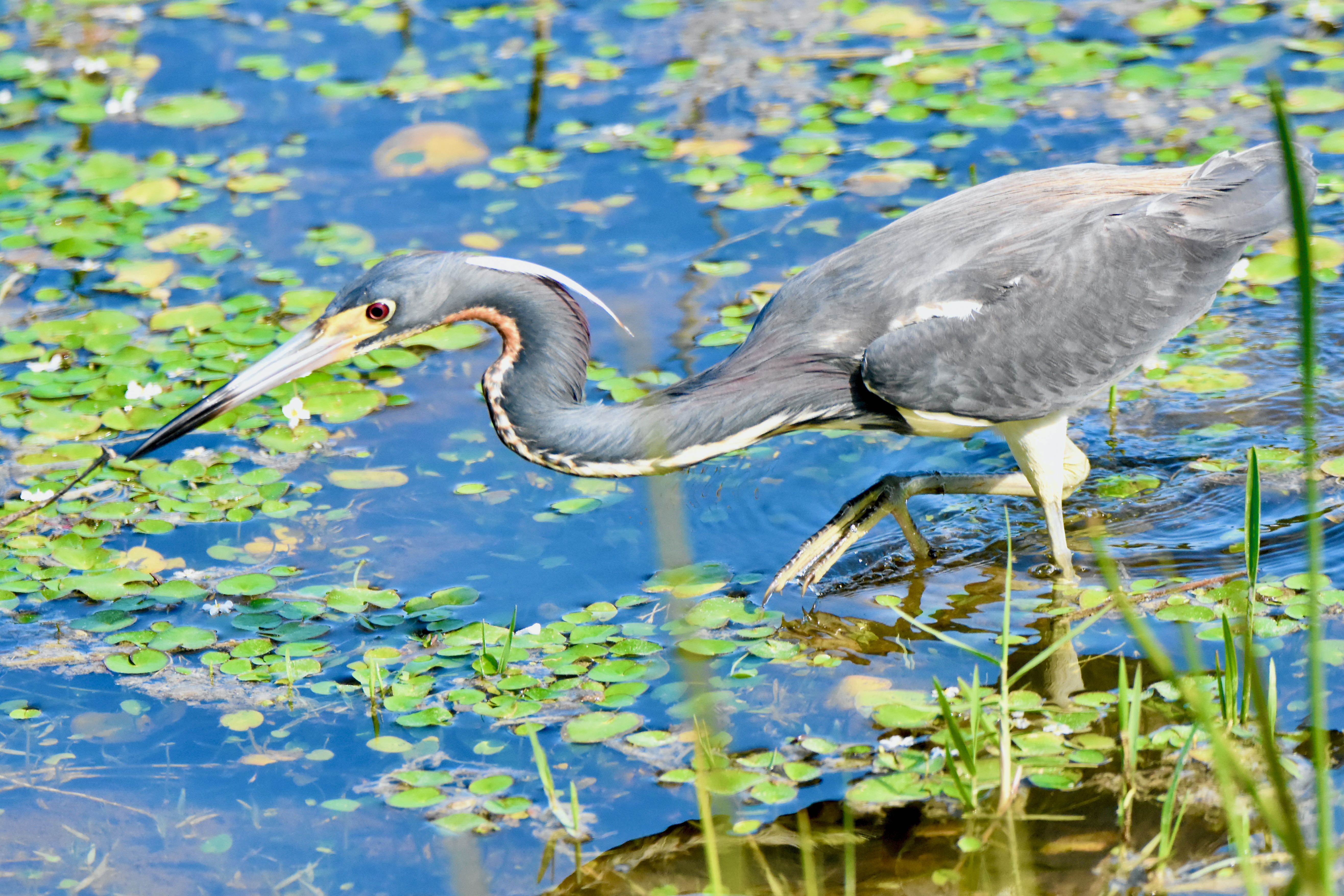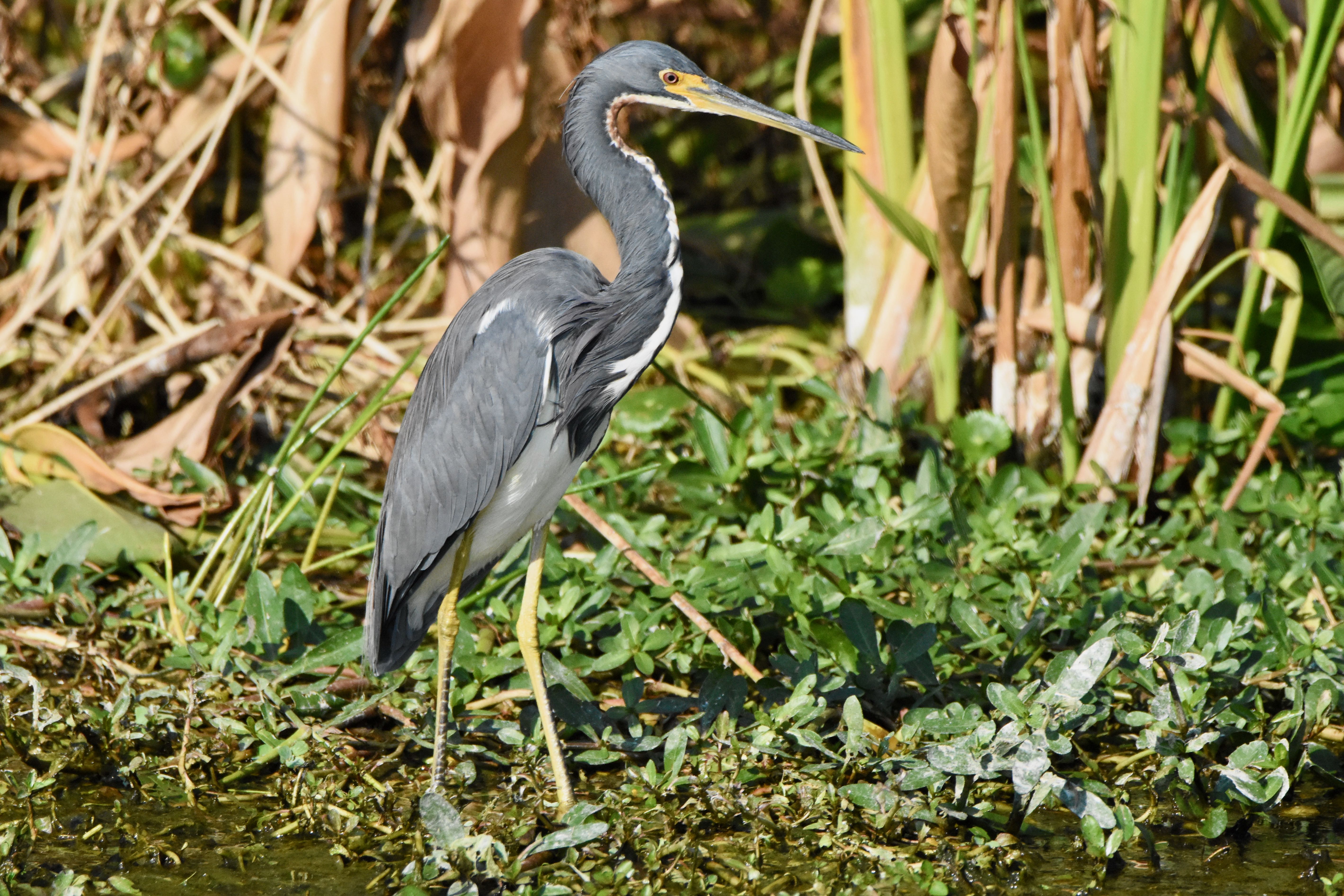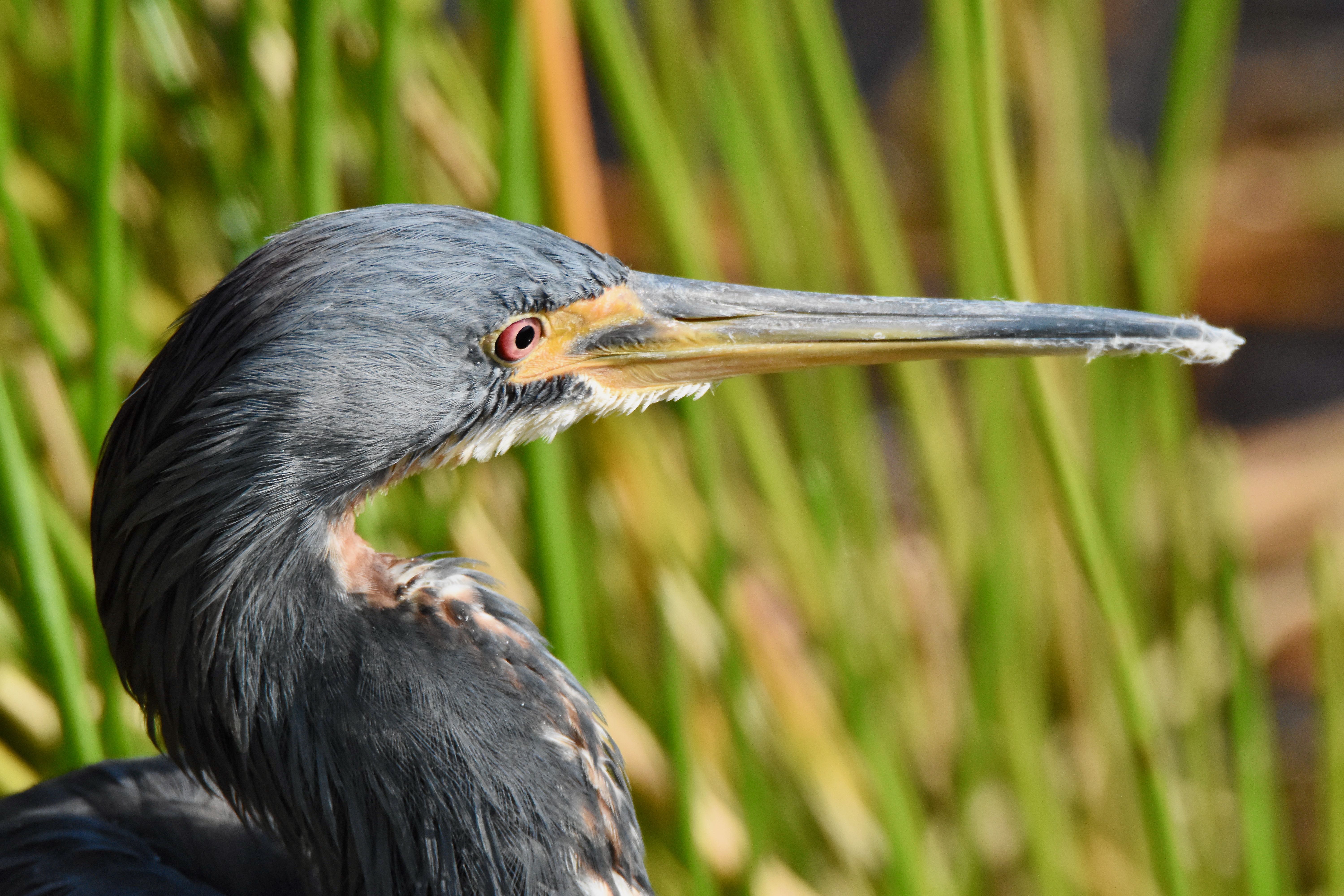
Tricolored Heron, photographed at Winding Waters Natural Area, West Palm Beach, Palm Beach County, in April 2018.
Visit almost any wetlands in South Florida and chances are fair that you'll encounter this bird, the tricolored heron, Egretta tricolored. They're so common that the temptation is to overlook it while scanning the scene for something more rare, more spectacular looking.
Yet tricolored numbers are small enough statewide — and dwindling in some places — that Florida officially lists it as a species of special concern.
The reasons for the bird's decline aren't fully understood, according to a Florida Fish and Wildlife Conservation study done in 2011. Factors could include loss of habitat through development, degradation of habitat, increased recreational use of foraging and breeding grounds and pressure from predators.
Tricolored herons are at risk from exposure to pesticides and heavy metals. Changes in water flow and levels (hydrology) could affect foraging, breeding and roosting sites by diminishing prey. Add oil spills to the list of threats.
Tricolored are medium sized herons, mostly a slate blue with hints of red around the neck and back and a mostly white underside. It has a similar mix of colors as the great blue heron, but at about 22 inches long and with a wingspan of 38 inches, it's half the size of its larger cousin. Little blue herons are about the same size as the tricolored but are much more blue and have a distinct blue bill to the tricolored's yellow-orange.
Immature tricolored herons are more of a reddish brown on the head, neck and shoulders, so much so that they look like the reddish egret. However, the tricolored herons, again, have that yellow-orange bill, while reddish egrets have a pink bill. They also are more white in the neck and chest.
Tricoloreds are found throughout Florida, more common in coastal areas than inland, and more in Central and South Florida than in North Florida. They are year-round residents of the state. In breeding season, tricoloreds can be found along the Gulf and Atlantic coasts as far north as Massachusetts, and also along portions of Southern California's Pacific Coast. They're also found on both coasts of Mexico, through the Caribbean, Central and South America. Tricoloreds up north retreat south in winter. Though "threatened" in Florida, globally they are in good shape.
They are fish eaters and picky ones at that. They tend to hunt more medium-sized fish off a more select menu. When their preferred prey becomes scarce, most herons will substitute other items; not tricoloreds. Instead, they will change foraging methods and strategies in order to find what they want to eat. Tricolored herons will perform a kind of graceful dance as they manuever during foraging.
In Florida, tricolored breeding season begins in early March. Males select a nest site within a colony of heron species and wading birds. A few tricolored herons have been nesting at Wakadohatchee Wetlands in Delray Beach the last few years. The photo at the bottom right was taken there at a tricolored nest.
Females do most building, while males gather the sticks. A pair will have one brood a year, with three to seven eggs each. Incubation takes three to four weeks. The mortality rate is high — 30 percent of hatchlings die before reaching two weeks. The first to hatch tend to have an advantage in getting food from mom and dad over their younger siblings — for them, starvation is a real threat. Those that survive will fledge at 16 days to three weeks.
Tricoloreds are members Ardeidae, the family of egrets and herons. The tricolored once was known as the Louisiana heron.
Winding Waters Natural Area



